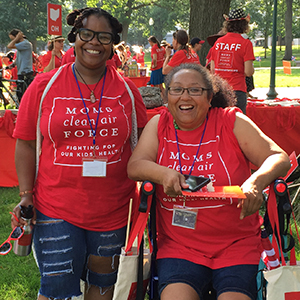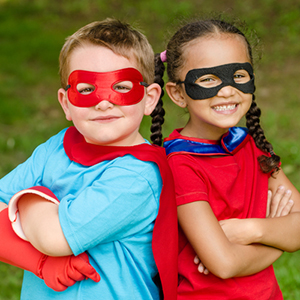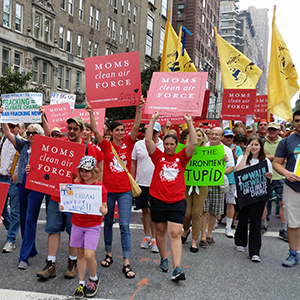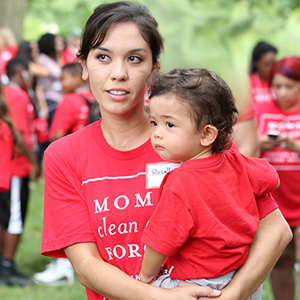
Have a question for Mom Detective? Submit it here.
MARYANNE IN SOUTH DAKOTA ASKS:
I’ve gone down a bedding rabbit hole. I’m in the market for new sheets. My partner wants wrinkle-free sheets, but I hear they are made with harmful chemicals. I started shopping and ran into different fabric certifications—what’s OEKO-TEX? How do I find nontoxic sheets?
Tell Congress: Support the Break Free From Plastic Pollution Act
MOM DETECTIVE ANSWERS:
I’m going to help you, Maryanne, but I hope you won’t mind me saying that wrinkle-free sheets confuse me. Why is this a thing? Doesn’t it all wrinkle when we climb in bed? I actually have a colleague who has fond memories of his line-dried and hand-ironed childhood sheets. I can imagine how good slipping into those would feel, so I’ll stop my eye-rolling now.
Moving on.
I hear you on the sheets-shopping rabbit hole. Beyond wrinkle-free, everything under the sun is being marketed: Breathable! Warming! Cooling! Soft! I lack interest in learning the difference between sateen and percale or anything about thread count. But here we are. What does it all mean?
Wrinkle-free
When free-falling in a shopping rabbit hole, it’s always good to focus on one ask at a time. Let’s tackle wrinkle-free: Sheets sold as wrinkle-free, permanent press, non-iron, or easy care tend to be treated with chemicals that ensure no ironing is needed—for a certain number of washes, anyway. A common wrinkle-free finishing agent is a resin that releases formaldehyde, a known human carcinogen. Think about it. Of course something “non-iron” is too good to be true. It begs the question, how is that possible? And the answer, all too often, is chemicals are added.
Exposure is worst for the workers making your sheets, but it can also cause skin irritation as you sleep. Other chemicals may be used as well, and I have yet to locate a set of sheets with a label listing chemicals used in manufacturing. So looking for “permanent press” sort of marketing claims is your best way to avoid wrinkle-free chemicals.
Never fear! Your partner can still achieve wrinkle-free sheet status without the chemicals:
- Choose fabrics less likely to wrinkle (more on that below).
- If you have the time and desire, iron them—it could feel meditative.
- How you wash matters: untangle sheets before doing a load of laundry, and don’t overload the washer (or the dryer).
- How you dry matters: line drying can help with wrinkles.
- Temperature matters: washing and machine drying on low temperatures may help too, as can taking sheets out of the dryer as soon as a cycle ends.
- Try taking your sheets from the dryer damp and pull them tight right on the bed.
- Always fold sheets right away if you’re not going to use them; crumpled balls mean more wrinkles.
- If you’re willing, you can iron or steam, which is easier, and can help remove wrinkles (you can also put a wet washcloth in the dryer with dry wrinkled sheets—I call this lazy steaming)
Least wrinkly fabrics
Another way to get a little less wrinkly is to choose fabrics that are the least likely to wrinkle. Linen is off the table for you, unless you love to iron, as it’s wrinkle-prone. I am not a fan of synthetic fabrics, which are essentially plastic—they’re derived from petrochemicals, and they can shed microplastics—so I’m never going to suggest polyester or microfibers, no matter how smooth. In the realm of natural fabrics, there’s a variety, some said to be less wrinkly than others: cotton and organic cotton, plus a growing number of “eco-friendly” smooth textiles like bamboo, eucalyptus, and even mulberry. A quick Google reveals that when it comes to cotton, Egyptian has long-staple fibers that are said to be more wrinkle-free than other cottons. Thread count isn’t supposed to matter when it comes to wrinkles.
While you asked about wrinkles, my focus is always health. So I have to mention that cotton is one of the most pesticide-sprayed crops on earth. Essentially that’s why people purchase organic cotton—fewer pesticides. When it comes to the other textiles I mentioned, apparently the process of turning bamboo into fabric isn’t particularly eco-friendly; it can be chemically intensive. Currently, the U.S. Federal Trade Commission (FTC) requires that yarn labeled as anything other than “mechanically processed bamboo” must be called “rayon” or “rayon made from bamboo.”
Consumer help finding nontoxic sheets
All of this is confusing. Even if chemicals used during textile production are only present in trace amounts in a final bedding item, I don’t want to buy something that contributes extra chemicals to our waterways. I’m no expert on fabric manufacturing, and I’m not up on the latest textile finishing chemicals, so when I’m in the market for nontoxic sheets or other bedding, I rely on the third-party certifications, including the one you mention. No one certification is perfect and manufacturing processes change and vary, but I find them helpful. There’s an unfortunate amount of greenwashing in the world, and these standards and certifications provide outside confirmation of (some of) the claims companies make about their sheets.
- OEKO-TEX has several labels, and the one you will likely find on sheets is their Standard 100 certification, which tests textiles for harmful substances in order to protect your health. To see what this label covers, read more about it here. They say they review their limit values for harmful substances at least once a year. OEKO-TEX also has a separate organic cotton standard.
- Global Organic Textile Standard (GOTS) is a textile processing standard for organic fibers, including environmental criteria, backed up by third-party certification of all processing stages. GOTS-certified products include home textiles like sheets but also mattresses, yarns, clothing, fabrics, and even personal hygiene products. Their website has a whole section on chemical additives, if of interest.
- UL Greenguard certification is focused on chemical emissions from a variety of everyday product groups in an effort to create healthy indoor air. Of their certifications awarded, the “gold” is their most stringent.
I hope you can find a set of unwrinkly sheets with all three of these certification labels on it! I don’t know if this is possible. I do know that it shouldn’t be up to individual consumers to work this hard to find a set of safe and smooth nontoxic sheets—crib size, twin size, or family bed size. Pregnant people, babies, and children are especially vulnerable to unsafe chemicals in bedding. If you agree, I invite you to join Moms Clean Air Force to advocate for better chemical policy for all consumer products, especially those we will be breathing in all night long every night as we sleep.
Learn more about Moms’ work on chemical safety.
Tell Congress: Support the Break Free From Plastic Pollution Act




